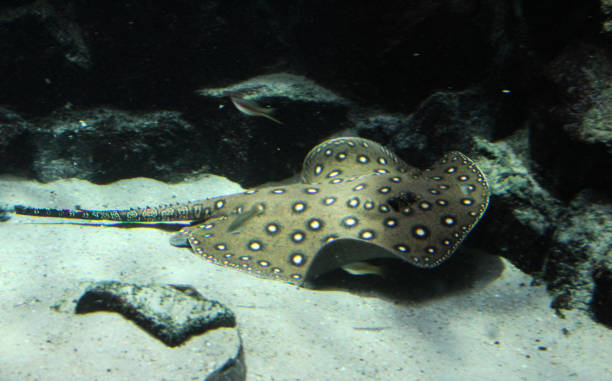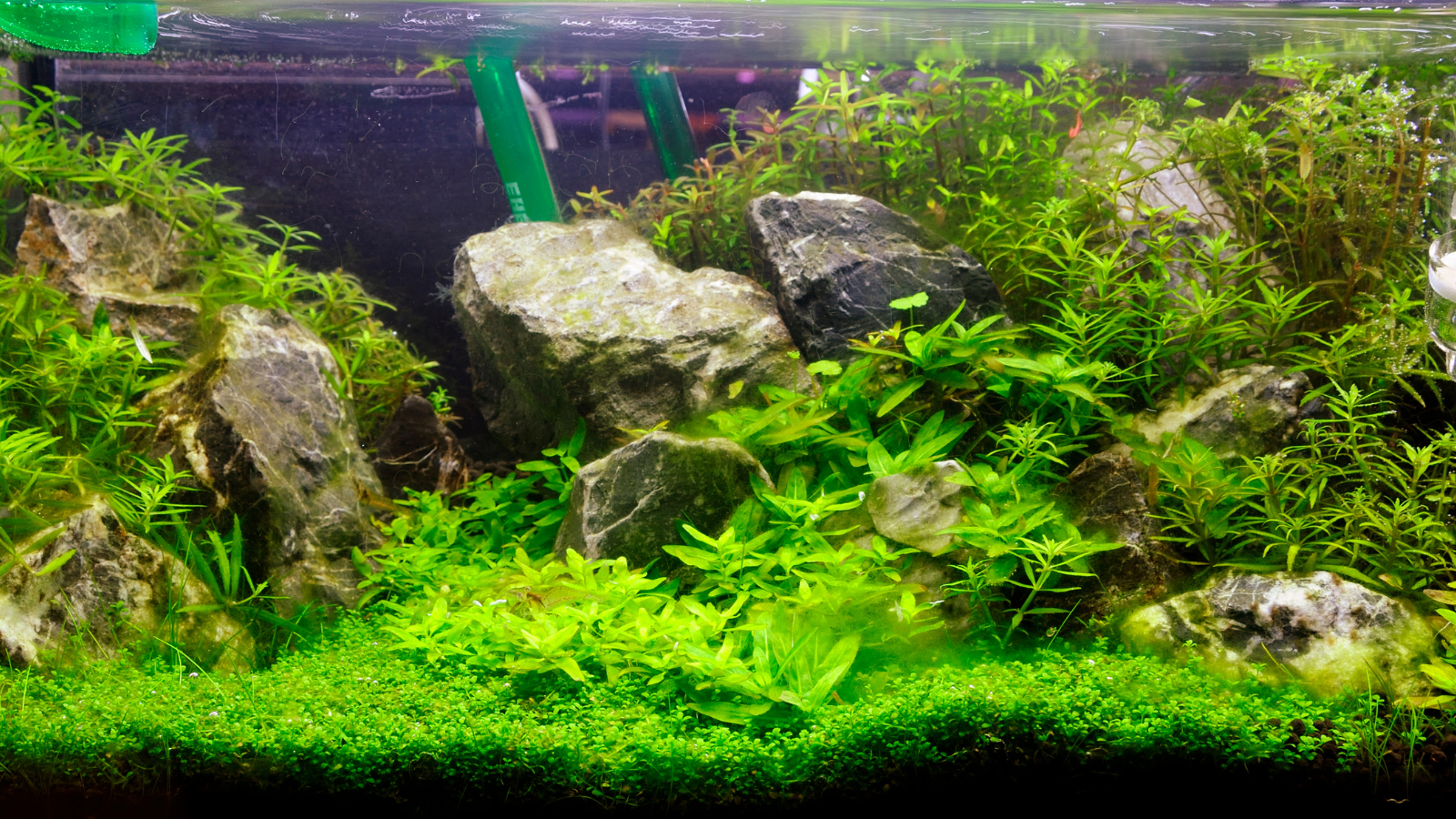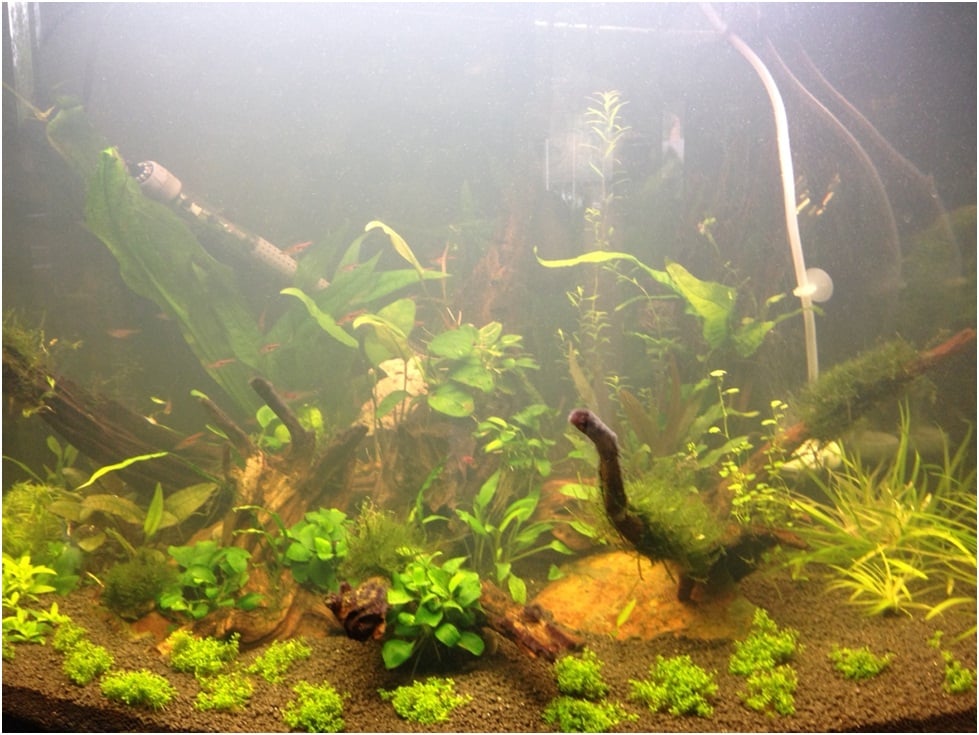
One of the most original and amazing fish that can be kept in an aquarium is theocellate river stingray(Potamotrygon motoro). In its natural environment, it inhabits the waters and floodplains of South America. It is a real colossus of aquarium fish (and the largest aquarium stingray) - under good conditions its body can reach 60-80 cm in length! How to breed this unusual species of stingrays in an aquarium?
The stingray is probably the largest freshwater fish that can be effectively bred in a home aquarium for decades. However, there is nothing to hide - this is an offer for more experienced aquarium enthusiasts who, in addition, have a large, well-equipped tank.
Aquarium stingrays - characteristics and external appearance
The black river stingray has a characteristic flattened, round body with a gray-brown color (with spots) at the top and cream at the bottom. However, individual breeding varieties may differ in color. The tail of a ray has the shape of a whip and is equipped with a venom spike (in case of danger, it can attack with it - therefore all aquarium maintenance work should be performed with caution). Interestingly, the stingray "replaces" the spike, shedding the old one on average every 6 months. A single individual has up to four venom spines at the same time. Restless rays can also bury themselves in the ground. Sexual dimorphism is not clearly marked. The male has copulatory processes (so-called half-penis) located in the corners of the pelvic fins at the base of the tail (and can be recognized by this). The stingray is a long-lived species - it lives in good conditions for up to 20 years. Older specimens can be as long as 60-80 cm.
Lifestyle and reproduction of stingrays
Stingrays are usually calm and very intelligent fish. They are unlikely to attack other fish (sometimes they are kept in a group aquarium with large species - the recommended companionship is arowanas or catfish from the families Loricariidae and Pimelodidae). However, due to their specific lifestyle, they are most often grown separately. Males show aggressiveness towards females during the spawning period. They reach sexual maturity after a few years. It is best if the pairs themselves match inside the "herd". When buying "pairs" it is best to choose females larger than males (then they are easier to defend against their aggressive advances). Artificial breeding is very difficult and is rarely successful. The male grabs the female with his teeth and slides his belly under her belly. Sometimes he has to repeat unsuccessful attempts many times. It only takes a few seconds to fertilize. Gestation lasts 9-12 weeks. The female can produce 1-5 offspring. Young rays are independent (initially they feed on supplies from the gallbladder), their parents do not care for them. It is recommended to separate babies from adults.
Stingray requirements
In order for the fish to live well, they need plenty of space. This species is not suitable for a standard, even 100-200 liter aquarium. The minimum tank length for steam is 200 cm (minimum height 50 cm). However, aquariums with a capacity of 400-800 l (or more) are recommended for breeding. In this case, the aquarium can be made to order with non-standard sizes (long, wide, but not too tall). The water temperature should be between 22-28 ° C. The heater should be secured so that it does not burn the body of the fish. Stingrays like soft to medium hard water with a pH of 6.0-6.5. The best substrate is sand or very fine gravel. Fish have a delicate body, so sharp edges of coarser gravel can injure them. It is worth making a thick layer of substrate (rays like to dig themselves in it). Plants, stones and roots can be placed in the aquarium (no sharp, protruding sections), but most of the bottom must remain exposed. Any decorative elements should be massive and well-stabilized. The aquarium must be equipped with a cover - fish can jump out of the tank. The lighting should be low, otherwise the rays will be skittish and weakly colored (you can even use moonlight). The tank should be fitted with a high-efficiency pump with a filter. It is recommended to use several filter cartridges - also removing biological contamination. The fish are very dirty and, in addition, they are sensitive to water pollution (especially nitrogen compounds). The water should be well aerated and changed frequently (30% even once a week).
Feeding the Potamotrygon motoro
Stingrays should be fed twice a day (young more often) using a varied diet. Their diet includes freshwater fish (including live fish), shrimp, meat (and especially hearts) of clams, crustaceans and earthworms. Juveniles eagerly eat live or frozen bloodworms. After a homogeneous live feed, fish should be fed vitamins. Special food - mixes are also available for sale. Malnourished fish are easily recognizable - they have a clearly defined backbone.
Setting up an aquarium with stingrays is neither easy nor cheap. Later on, there is also the high cost of breeding (replacing a huge amount of water, expensive food, connecting equipment to high power) and the need for constant care. The creatures, however, with their fantastic appearance and interesting lifestyle, reward all the hardships and costs incurred.


